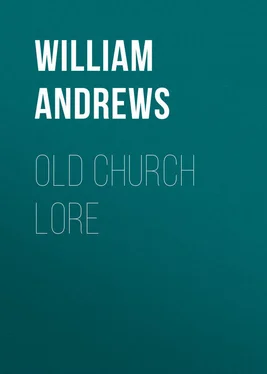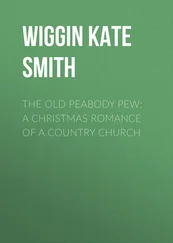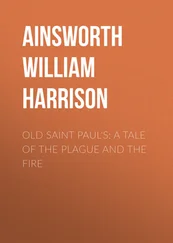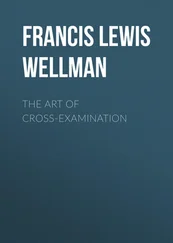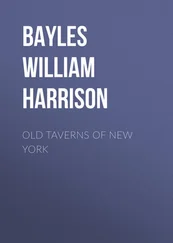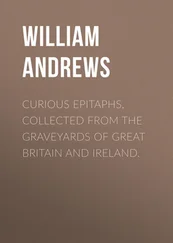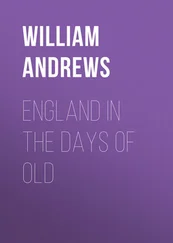William Andrews - Old Church Lore
Здесь есть возможность читать онлайн «William Andrews - Old Church Lore» — ознакомительный отрывок электронной книги совершенно бесплатно, а после прочтения отрывка купить полную версию. В некоторых случаях можно слушать аудио, скачать через торрент в формате fb2 и присутствует краткое содержание. Жанр: foreign_antique, foreign_prose, на английском языке. Описание произведения, (предисловие) а так же отзывы посетителей доступны на портале библиотеки ЛибКат.
- Название:Old Church Lore
- Автор:
- Жанр:
- Год:неизвестен
- ISBN:нет данных
- Рейтинг книги:3 / 5. Голосов: 1
-
Избранное:Добавить в избранное
- Отзывы:
-
Ваша оценка:
- 60
- 1
- 2
- 3
- 4
- 5
Old Church Lore: краткое содержание, описание и аннотация
Предлагаем к чтению аннотацию, описание, краткое содержание или предисловие (зависит от того, что написал сам автор книги «Old Church Lore»). Если вы не нашли необходимую информацию о книге — напишите в комментариях, мы постараемся отыскать её.
Old Church Lore — читать онлайн ознакомительный отрывок
Ниже представлен текст книги, разбитый по страницам. Система сохранения места последней прочитанной страницы, позволяет с удобством читать онлайн бесплатно книгу «Old Church Lore», без необходимости каждый раз заново искать на чём Вы остановились. Поставьте закладку, и сможете в любой момент перейти на страницу, на которой закончили чтение.
Интервал:
Закладка:
“It was very usual,” says Leland, “in greater brydges to build chappells in which they did pray for the soules of their founders.” There were other reasons for erecting chapels, one being for a place of residence for priests to solicit alms from all who passed over the bridge, whether walking or riding, to keep it in repair. Some were built for sheltering benighted travellers, having crypts where rest and refreshment might be obtained. In these chapels, the wayfarer could pray for protection on his journey, and return thanks for safety after his undertaking had been completed. Travelling, in mediæval times, was beset with trial and hardship on every side.
The history and romance of London Bridge must ever remain amongst the subjects most popular to the people of England. The first and famous London Bridge was regarded as one of the glories of the Middle Ages. The bridge was commenced by Peter Colechurch, in 1176. He worked for twenty-nine years, then death ended his earthly career, and “he was sepultured” in the chapel on the bridge he had done so much to erect. A clever Frenchman, called Isembert, completed the work, in the year 1209. The undertaking had the hearty support of the people, and large sums of money and extensive endowments of land were given to carry it on. The excitement throughout the land was immense. The nation felt it was one of its great undertakings. It was in length nine hundred and twenty-six feet, in width forty feet, some sixty feet above the water, and stood upon nineteen pointed arches, between massive piers. When first completed, it had only one building upon it, a handsome stone chapel, dedicated to St. Thomas Becket, which stood on the middle pier. Subsequently, two rows of houses were erected on the bridge, one on each side of the road. A drawbridge was put up as a means of protection. A terrible fire, on July 10th, 1212, was the cause of the death of upwards of 3,000 persons. Stow, in his “Survey of London,” supplies some important information on this subject. After adverting to a fire commencing on the Southwark side of the bridge, he states that “an exceeding great multitude of people passing the bridge, either to extinguish and quench it, or else to gaze at and behold it, suddenly the north part, by blowing of the south wind, was also set on fire, and the people, which were even now passing the bridge, perceiving the same, would have returned, but were stopped by fire; and it came to pass, that as they stayed or protracted time, the other end of the bridge also, namely, the south end, was fired, so that the people, thronging themselves between the two fires, did nothing else but expect present death; then came there to aid them many ships and vessels, into the which the multitude so unadvisedly rushed that, the ships being drowned, they all perished. It was said, that through the fire and shipwreck, there were destroyed about three thousand persons, whose bodies were found in part, besides those that were wholly burnt to ashes, and could not be found.” A frost, in 1282, destroyed five arches of the bridge. In 1305, when Edward I. was king, was commenced the practice of placing the heads of traitors over London Bridge gateway. Paul Hentzner, a German traveller, visited England in 1598, and counted on it no fewer than thirty heads. Several houses on the bridge were destroyed by fires at various times, and all were swept away by the Great Fire, of 1666. A good idea of these buildings may be obtained from the picture we give on page 47.
On the west side of the Ouse Bridge, at York, was St. William’s Chapel, an interesting example of early English architecture. Respecting the origin of this chapel, there is a popular story that it was built shortly after the bridge was completed, in 1268, in obedience to royal commands. The tale is to the effect that a Scotch nobleman was visiting the city, shortly after the erection of the bridge, when some of the citizens quarrelled and came to blows with his servants on the bridge. Several of the strangers were slain. The riot was brought under the notice of the kings of England and Scotland for settlement, and it was finally agreed that the citizens of York should pay £300, a large amount in those days, and erect a chapel on or near the spot where the servants met their untimely deaths, and also that they maintain two priests to pray for the souls of the slain men. After the Reformation, the chapel was converted into an Exchange for the Society of Hamburg Merchants at York, and subsequently put to other secular uses. Finally it was taken down, on the erection of a new bridge, in the year 1810.
Under the year 1505, a note appears in Hollinworth’s “Mancuniensis,” stating that “Care was taken for the reparation of the chappell standing on Salford Bridge, built, as it is sayd, by Thomas del Booth, in Edward III.’s time. He certainly gave £30 towards the building of Salford Bridge; and it was very usual on greater bridges to build chappells, in which they did pray for the soules of their founders. This chappell is now converted to a prison for Manchester and Salford.” The building was pulled down in 1778, for the purpose of making the bridge wider.
We have other instances of bridge prisons besides the one at Salford. A familiar example is that at Bedford. It has been asserted by several authors that Bunyan was imprisoned in it, but it has been proved beyond doubt that such was not the fact. The bridge prison belonged absolutely to the borough, and Bunyan was a county prisoner, and spent his time in the county gaol. Much interesting information bearing on this subject will be found in Dr. Brown’s book on Bunyan. The records of the town contain some curious particulars respecting the bridge. The following may be given as an example: “Item, yt ye ordered that the great cheyne by every nighte at ten of the clocke to be locked crosse the great bridge, and so kept untyl fyve of the clocke in the morninge, and that he or they that shall dwell in the bridge house, to keep the keye of the said locke, and keep the same soe locked, and not suffer aine horse, horseman, or cattell to passe within that tyme wch he shall not knowe. And of them wch he shall knowe, to take a pennie only for letting doune the cheyne and noe more.” The prison was taken down in the year 1765. Here was a chapel or oratory, dedicated to St. Thomas the Martyr, built by a Bedford man, early in the fourteenth century, and endowed with lands for the support of a warden or chaplain, who had to repair the bridge at his own expense.
A small structure on the old bridge at Bradford-on-Avon has also been used as a prison. Its original purpose has provoked some discussion. Some say that it was erected for a chapel, but not a few question the statement. Aubrey of old, and the Rev. J. Charles Cox, LL.D., and Precentor Venables of our time, are of opinion that it was a chapel. For many years it was used as a lock-up, and later as a powder magazine. It has a dome-like roof, of later date than the building. It bears a model of a gudgeon, the emblem of St. Nicholas. The Bradford-on-Avon folk are familiarly spoken of as Bradford gudgeons. Those who had been imprisoned on the bridge were said to have been “under fish and over water.”
A small bridge-chapel at Derby, dedicated to St. Mary of the Brigg, links the past with the present. It most probably dates back to the fourteenth century. Rev. J. Charles Cox, LL.D., in his “Churches of Derbyshire,” traces with care the history of this old-time building. He says: “St. Mary’s Bridge – by which access was gained from Nottingham and the south into the town of Derby, through whose streets lay one of the most important thoroughfares from London to the north – must, in mediæval days, have been of considerable importance. It is pleasant to think of the busy burgesses or men-at-arms turning aside into the Chapel of Our Lady for a brief silent prayer, before crossing the Derwent, and plunging into the forests that stretched out before them on the other side of the river.” There would, doubtless, be a gatehouse, built for defence and for levying tolls, etc. On the chapel or gatehouse were placed the heads and quarters of the priests who were martyred at Derby, on July 25th, 1588, when the Jesuits were making determined efforts to win England back to Rome. “Two resolute Catholic gentlemen” stole and buried the remains. Here have worshipped the persecuted Presbyterians of Derby. About a century ago it was turned into dwelling-houses, and later was used as a carpenter’s shop. In 1873, a Bishop’s license was obtained, and once more it was used as a house of prayer. We give, by the courtesy of Mr. Richard Keene, a view of the chapel, from an interesting book published by him, in 1881, under the title of “All about Derby,” by Edward Bradbury and Richard Keene. The picture is from the pencil of the late Llewellynn Jewitt, F.S.A., the eminent antiquary.
Читать дальшеИнтервал:
Закладка:
Похожие книги на «Old Church Lore»
Представляем Вашему вниманию похожие книги на «Old Church Lore» списком для выбора. Мы отобрали схожую по названию и смыслу литературу в надежде предоставить читателям больше вариантов отыскать новые, интересные, ещё непрочитанные произведения.
Обсуждение, отзывы о книге «Old Church Lore» и просто собственные мнения читателей. Оставьте ваши комментарии, напишите, что Вы думаете о произведении, его смысле или главных героях. Укажите что конкретно понравилось, а что нет, и почему Вы так считаете.
